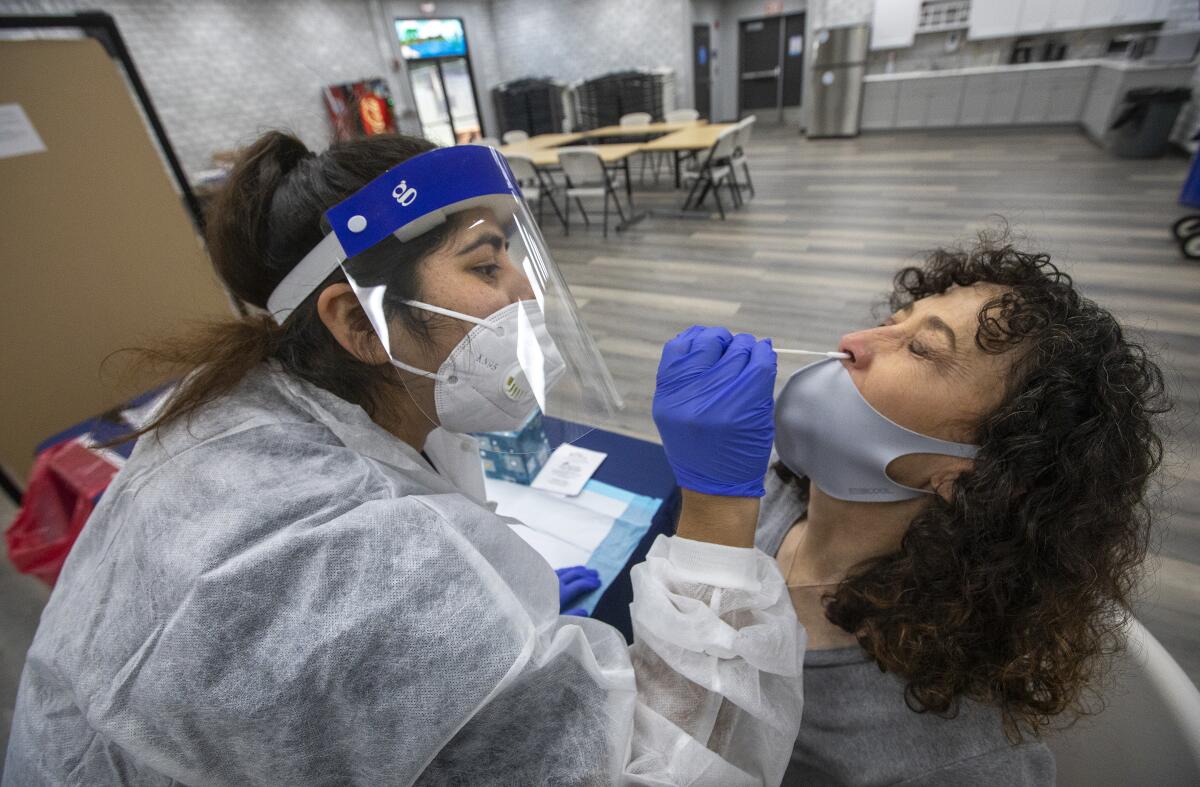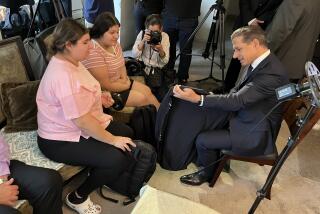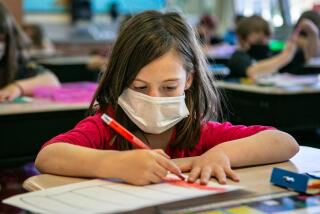What’s happening with COVID in schools? We don’t know

- Share via
With students starting to return to classrooms across the country as COVID-19 infection rates shrink, parents, teachers and the public as a whole are watching anxiously. There already have been some worrisome stories about kids who crowded in hallways or on bus lines, infections that cropped up within days and campuses that closed again as a result.
But it’s hard to know what all this means. Were people catching the virus from one another at school, or were these cases from the community at large? Does an outbreak of positive test results at school then translate into people becoming seriously ill and maybe even dying, or are outbreaks almost entirely benign?
These are valid questions in uncertain times. The biggest concern of all, though, is that helpful answers might not be forthcoming. Although local and state governments provide regular updates on COVID-19’s spread in the community — new cases, deaths and hospitalizations, broken down by age, race and sex — the gathering and dissemination of information on infections at schools is determined by haphazard mishmash of policies that depend on the state and school district where the cases occur.
Some schools plan to report every case. Some states have committed to gathering and tracking the information and making regular reports to the public. Others have said they’ll track but not divulge any information publicly, and many haven’t said what they’ll be doing.
Some schools immediately announce every case, while others won’t tell anyone but those who were known to be in close extended contact with the infected person. The New York Times recently reported on a county in Georgia where staff who tested positive were ordered by a deputy school superintendent not to tell anyone — fellow employees, parents, it didn’t matter — that they might have been exposed.
This is a frightening pandemic, and the public has the right to know what’s going on; at this point, the reopening of schools is one of the most talked-about and contentious COVID-19 issues. Parents should be told whether there are cases at the schools their children attend and, if so, what’s being done about it. Communities have a right to know when extra cases might be in their midst. Teachers have been the group generally most opposed to reopening, and they should know when other teachers are stricken ill through their jobs.
Nor are the data consistent from district to district, state to state. The ages of students are sometimes grouped differently, or schools might define “outbreak” in different ways. Does five students constitute an outbreak? Fifty?
This lack of transparency and consistency erodes public trust. Far more important, it hampers the ability of researchers and government officials to investigate which safeguards keep the spread of infection to a minimum and which don’t. Maybe face shields are more effective than plexiglass dividers in the classroom. Maybe ensuring that students stay in the same small groups all day and don’t mingle with others works better than maintaining six-foot distances within large groups.
The nation is dropping the ball on what could be a massive and invaluable database at its fingertips. And the public is going into the reopening of schools unaware of how parents, teachers and communities might be kept in the dark.
California’s largest school district, Los Angeles Unified, says the procedure for tracking and reporting cases is something for county health officials and the state to determine. The state Department of Education advises — but doesn’t order — school districts to inform staff and school families about possible cases. It doesn’t say anything about a responsibility to inform the larger community. The state Department of Public Health did not respond to questions about whether or how this information would be reported, tracked and disseminated. Who’s in charge here?
This lack of a precise, consistent and transparent way of reporting cases of school-related COVID-19 is occurring against a backdrop of California schools waiting for the opportunity to reopen campuses at least part of the time, perhaps later this month. The federal government should have set up a system for this months ago, but Education Secretary Betsy DeVos has been a no-show on campus safety throughout the pandemic.
Schools and the public need and have a right to know how safe it is to go back to the classroom, who’s doing the best job and how we can best keep students and school staff healthy. Failing to gather and share a complete picture from schools can only hurt.
More to Read
A cure for the common opinion
Get thought-provoking perspectives with our weekly newsletter.
You may occasionally receive promotional content from the Los Angeles Times.









